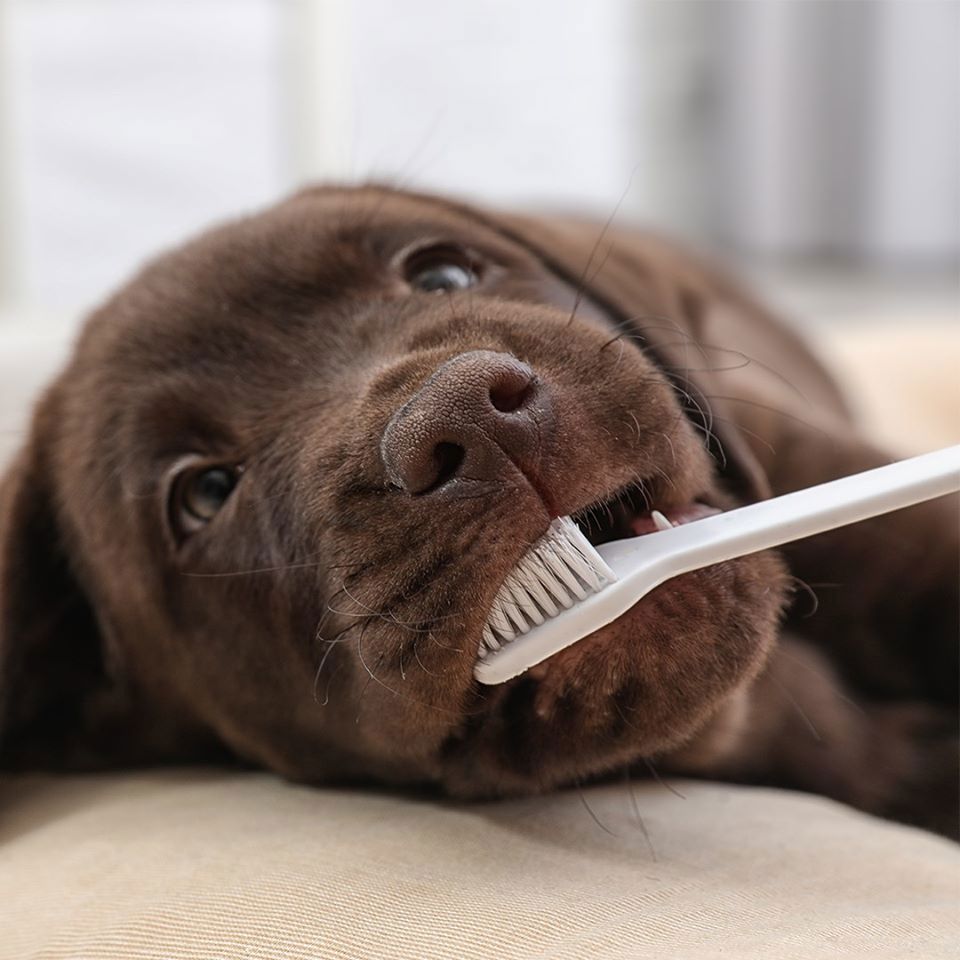Pet dental support
- Health
- Dog
- Cat
Dental care is an important part of general hygiene, health and well-being of your pet.

There are three types of cleaning methods available:
1. A visit to the veterinary clinic is a very good practice, even an important appointment to schedule. While it may be a more costly solution, it is an effective way to control oral hygiene and helps maintain your pet’s long-lasting oral health
2. Regular pet teeth brushing by the pet parent should be a part of the daily or weekly routine. When an animal is young – in the puppy and kitten stages – is the best time to start, as the animal will get used to this regular practice. To start, simply rub the pet’s tooth with a damp cloth or a finger brush 2 or 3 times a week to help your pet get used to it. At first, in the early age of the animal, it is the best time to start dental care as puppies or kittens will get use more easily to this regular practice. At start, simply rub the pet’s tooth with a damp cloth or a finger brush about 2 or 3 times a week to help her/him to get used to it.
When the puppies/kittens get their adult teeth (between 12 to 18 weeks for puppies and 12 to 24 weeks for kittens), it will become necessary to brush their teeth more regularly using an animal toothpaste. Caution: do not use human toothpaste. There is danger of your pet swallowing the toothpaste and some ingredients, such as fluorine, could be detrimental to pets.
3. The use of alternative or specialized food products. While it is important to ensure good oral hygiene for your pet, it can be difficult to do regular tooth brushing at home or invest in veterinary treatments/care. To help you in your daily approach, several dental care pet foods have been developed and put on the market to complete tooth brushing.
The first element to consider is to serve a dry food, which, by its texture, will offer an abrasive action, so brushing teeth. If offering a dental care product to your pet is a key solution, you will notice that these kibbles force the animal to chew, and thus increase the brushing action on the teeth.
In addition to this abrasive action, several ingredients can be added, alone or in combination, to different specialty foods to help fight tartar, plaque and / or bad breath. Below you will find the main ingredients for dental care as well as a brief description of their action.
|
Mechanical action (brushing) |
Tomate pomace and pea fibre, shape and kibble size |
|
Prevention action |
Tartar formation and plaque: sodium tripolyphosphate |
|
Bacterial control action |
Vitamin C, green tea extract, cranberries and enzymes |
These different foods for dental care can be offered as a staple food every day or alternatively with the regular food, as long as you use foods of the same brand. Offering this type of food is an excellent initiative to help improve the health and oral hygiene of your pet.
In Wholesome Blend Naturally Fresh pet food from Trouw Nutrition Canada Companion Animal, the nutrition team has included one of the most efficient ingredients that helps improve oral health, sodium tripolyphosphate, and it is used to help control periodontal disease.
Sodium tripolyphosphate is a salt that is a sequestrant that binds salivary calcium making it less available for precipitation as dental calculus. It has been showed to reduce calculus in dogs by more than 55% (ref.: Hennet P1, Servet E, Soulard Y, Biourge V. (2007); Effect of pellet food size and polyphosphates in preventing calculus accumulation in dogs).